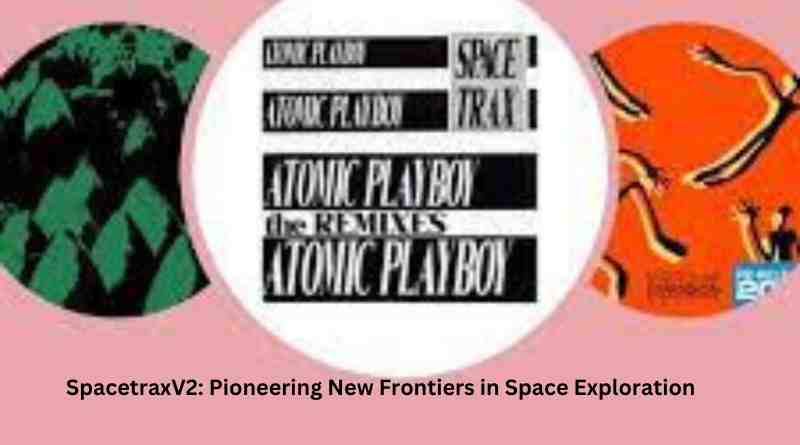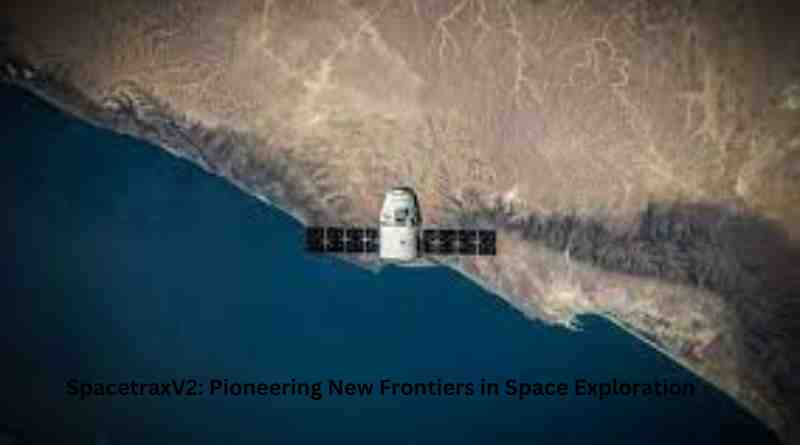In the vast and ever-expanding cosmos, the quest for discovery and understanding is an eternal journey. With the advent of SpacetraxV2, a groundbreaking technology, humanity is poised to accelerate this journey, pushing the boundaries of what’s possible in space exploration. This article delves deep into the world of SpacetraxV2, examining its revolutionary features, potential impacts, and how it’s set to redefine our quest among the stars.
Unveiling SpacetraxV2: A Technological Marvel
The Genesis of SpacetraxV2
The journey of SpacetraxV2 began as a vision to overcome the limitations faced by traditional space exploration methods. Developed by a team of astrophysicists, engineers, and data scientists, SpacetraxV2 is the culmination of years of research and innovation. At its core, SpacetraxV2 is designed to enhance and streamline the process of space exploration, making it more efficient, safer, and more accessible.
The Core Technology
At the heart of SpacetraxV2 lies its cutting-edge technology. It leverages advanced algorithms, propulsion systems, and materials science to significantly improve spacecraft performance. One of the key features is its ability to process vast amounts of space data using AI, helping identify and predict cosmic phenomena with unprecedented accuracy. Additionally, its propulsion system marks a significant leap forward, offering greater speed and fuel efficiency, thus extending the reach of missions further into space.
Revolutionizing Space Exploration
Enhanced Mission Capabilities
SpacetraxV2 revolutionizes space missions by enhancing their capabilities in several key aspects. Firstly, it extends the operational lifespan of spacecraft, allowing for prolonged missions and deeper space exploration. Secondly, its sophisticated navigation systems enable precise maneuvering and landing, crucial for exploring distant celestial bodies. Lastly, its robust communication systems ensure that vast distances do not hinder data transmission back to Earth.
Fostering Scientific Discoveries
With SpacetraxV2, scientists can look forward to a new era of discoveries. Its advanced sensory and analytical tools are capable of detecting and studying distant objects in much greater detail. This means gaining insights into the composition of far-off planets, the behavior of stars, the mysteries of dark matter, and more. Each mission equipped with SpacetraxV2 has the potential to uncover answers to some of the most profound questions in astrophysics and cosmology.
Impact on Humanity and Beyond
Inspiring Global Collaboration
The advent of SpacetraxV2 has ignited a global movement in the space exploration community. Countries, research institutions, and private entities are increasingly collaborating, sharing data and resources, facilitated by the universal appeal and capabilities of SpacetraxV2. This collaborative spirit is accelerating advancements in space technology and fostering a more unified approach to exploring our universe.
Educational and Societal Implications
SpacetraxV2 is not just transforming space exploration; it’s also making waves in education and society. By sparking interest and excitement in STEM fields, it’s inspiring the next generation of scientists, engineers, and explorers. Furthermore, the technology and discoveries facilitated by SpacetraxV2 have the potential to trickle down into various sectors, driving innovation in areas like telecommunications, materials science, and even climate science.
Navigating Challenges and Ethical Considerations
Addressing Space Debris and Safety
As with any major advancement in space technology, SpacetraxV2 brings challenges and responsibilities. A primary concern is space debris; as missions increase, so does the potential for clutter and collisions in Earth’s orbit. The developers of SpacetraxV2 are committed to sustainable space exploration, incorporating debris mitigation strategies and promoting regulations that ensure the long-term usability of space for all.
Ethical and Governance Issues
The unprecedented capabilities of SpacetraxV2 also raise ethical questions and governance issues. Who gets to access and use this technology? How do we ensure that its benefits are shared equitably across the globe? As we step into this new era, it’s crucial that the international community works together to establish guidelines and agreements that foster ethical and cooperative space exploration.

The Future Horizon: What’s Next for SpacetraxV2?
Continual Innovation and Upgrades
The journey of SpacetraxV2 is far from over. Researchers and engineers are continually working on enhancements, from improving its AI algorithms to developing even more efficient propulsion systems. Each iteration promises to open up new possibilities and destinations in the cosmos.
Expanding Human Presence in Space
Ultimately, SpacetraxV2 aims to facilitate and expand human presence in space. Whether it’s through supporting manned missions to Mars, aiding in the establishment of lunar bases, or even paving the way for interstellar travel, SpacetraxV2 is at the forefront of making the human dream of becoming a multi-planetary species a reality.
Conclusion
SpacetraxV2 represents a significant leap forward in our quest to explore the unknown reaches of space. With its revolutionary technology, it’s not just redefining the boundaries of space exploration but also inspiring a new generation of explorers and scientists. As we stand on the cusp of this new era, SpacetraxV2 promises to lead us into a future filled with discovery, innovation, and hope. The cosmos awaits, and with SpacetraxV2, we’re ready to meet its challenges and unveil its secrets.
This segment initiates the article on “SpacetraxV2: Pioneering New Frontiers in Space Exploration,” focusing on the marvel of technology, its impact on space exploration, societal implications, and the future it heralds. To continue, please indicate if you’d like more detailed expansion on any specific section or additional sections to reach the word count.

